Amadeus IV, Count of Savoy
Last updated| Amadeus IV | |
|---|---|
| Count of Savoy | |
| Reign | 1233–1253 |
| Predecessor | Thomas I |
| Successor | Boniface |
| Born | 1197 Montmélian, Savoie |
| Died | 11 June 1253 |
| Spouse | Marguerite of Burgundy Cecilia of Baux |
| Issue | Beatrice of Savoy Margaret of Savoy Boniface, Count of Savoy Beatrice of Savoy |
| House | Savoy |
| Father | Thomas I of Savoy |
| Mother | Margaret of Geneva |
Amadeus IV (1197 –11 June 1253) [1] was Count of Savoy from 1233 to 1253.
Contents
Amadeus was born in Montmélian, Savoy. The legitimate heir of Thomas I of Savoy and Margaret of Geneva, he had however to fight with his brothers for the inheritance of Savoy's lands after their father's death. His brothers Pietro and Aimone spurred a revolt in Aosta Valley against Amadeus, but he was able to crush it with the help of Manfred III of Saluzzo and Boniface II of Montferrat, who were his sons-in-law. Together with his brother, Thomas, he fought against the communes of Turin and Pinerolo, but with uncertain results.
He was succeeded by his young son Boniface.
Career
Head of the family
As the eldest son of Thomas I of Savoy, Amadeus inherited the county and associated lands on his father's death in 1233. However, his brothers Peter and Aymon demanded that he divide the territories and give them their share. In July 1234, he and his brother William convened a family meeting at Château de Chillon. While both sides arrived with armed troops, William was able to negotiate a treaty between the brothers. This treaty kept the lands intact, but recognized the authority of the younger brothers within certain regions under Amadeus. [2] These territories were on the frontiers of Savoy lands, designed to encourage the brothers to expand the county rather than diminish it. When his brother Thomas left his career in the church in 1235, Amadeus granted him similar territories. [3]
Before he had a son, Amadeus changed his mind many times regarding his will. Initially, he had made his sons-in-law his heirs, but in 1235, he rewrote his will in favour of his brother Thomas. In December of that year, it went back to having his sons-in-law as heirs, until Amadeus was preparing for the siege. Then he rewrote the will in favour of Thomas. In March 1239, his daughters convinced him to return it to their favour. On 4 November 1240, Thomas returned and persuaded him to rewrite the will in his brother's favour again. When Thomas left, once again the will was reversed. [4] His final will was written in 1252, leaving the title and nearly everything to his son, Boniface, and naming his brother Thomas as regent and second in line for the title. [5]
Among European powers
Amadeus faced many challenges in balancing the demands of the greater powers in Europe at that time. Henry III of England wrote to Amadeus in 1235 to seek his consent and blessing to marry the Count's niece, Eleanor of Provence [6] In 1238, Amadeus went to the court of Frederick II, Holy Roman Emperor, in Turin, where he was knighted by the Emperor. Then with his brothers, he led troops as part of the siege of Brescia. [7] In July 1243, Amadeus and his brother Thomas were ordered by Enzo of Sardinia to join him in a siege of Vercelli, which had recently switched allegiances from the Empire to the Pope. Not only was the attack on the city unsuccessful, but Amadeus and his brother were excommunicated for it. [8] When the brothers wrote to the new Pope Innocent IV to appeal the excommunication, he granted their request.
In late 1244, when Pope Innocent IV fled from Rome, Amadeus met him in Susa and escorted him through the passes to Chambéry, and then provided his brother Philip as escort for the Pope downriver to Lyon. However, Amadeus was then willing to open the same passes to the imperial army. He also signed a treaty with Henry III on 16 January 1246 which gave rights of passage through the passes to the English in exchange for an annual payment of 200 marks. That same month, Amadeus joined a force which went to Provence to rescue his niece, Beatrice of Provence from the forces of Frederick and escort her to her marriage to Charles of Anjou [9] By May 1247, Frederick was ready to move against the Pope. He had gathered his army in Turin, and ordered those still loyal to him in the kingdoms of Arles and France to meet at Chambéry (the capital of Savoy). However, the revolt of Parma pulled Frederick back from this plan. That same summer, Amadeus blocked an attempt by the Pope to send 1500 soldiers to the Lombard League. On 8 November 1248, Frederick asked Amadeus and his brother Thomas to go to Lyon and start negotiations for peace. However, their efforts were unsuccessful and war continued until the death of Frederick. [10]
Family and children
He married twice, and each marriage produced children
- c. 1217, [11] he married Marguerite of Burgundy, daughter of Hugh III, Duke of Burgundy.
- Beatrice of Savoy (d. 1258), married firstly in 1233 Manfred III of Saluzzo (d. 1244), [12] married secondly on 21 April 1247 Manfred of Sicily
- Margaret of Savoy (d. 1254), married firstly on 9 December 1235 Boniface II of Montferrat, [13] married secondly Aymar III, Count of Valentinois
- on 18 December 1244, he married Cecilia of Baux, "Passerose", daughter of Barral of Baux [14]
- Boniface, Count of Savoy
- Beatrice of Savoy (1250 – 23 February 1292) married Peter of Chalon and Infante Manuel of Castile.
- Eleonor of Savoy, married in 1269 Guichard de Beaujeu
- Constance of Savoy, died after 1263
Related Research Articles
Amadeus II was the count of Savoy from 1078 to 1080. His life is obscure and few documents mention him. During his rule, he was overshadowed by his mother, but he had good relations with the papacy and, for a time, the Holy Roman emperor.
Humbert III, surnamed the Blessed, was Count of Savoy from 1148 to 1189. His parents were Amadeus III of Savoy and Mahaut of Albon. He ceded rights and benefits to monasteries and played a decisive role in the organization of Hautecombe Abbey. It is said that he would rather have been monk than a sovereign. On the death of his third wife he retired to Hautecombe, but then changed his mind and, by his fourth wife finally had a son, Thomas. He sided with the Guelph party of Pope Alexander III against the Ghibelline emperor Frederick Barbarossa. The result was an invasion of his states twice: in 1174 Susa was set on fire, and in 1187 Henry VI banished him from the Holy Roman Empire and wrested away most of his domains, of which he was left only with the valleys of Susa and Aosta. He died at Chambéry in 1189. He was the first prince buried at Hautecombe. His memorial day is March 4.
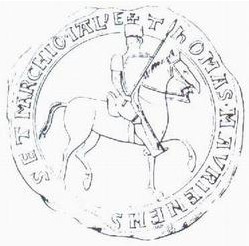
Thomas Ι was Count of Savoy from 1189 to 1233. He is sometimes numbered "Thomas I" to distinguish him from his son of the same name. His long reign marked a decisive period in the history of Savoy.
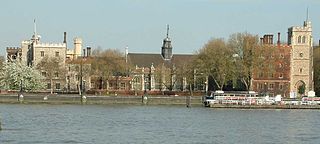
Boniface of Savoy was a medieval Bishop of Belley in Savoy and Archbishop of Canterbury in England. He was the son of Thomas, Count of Savoy, and owed his initial ecclesiastical posts to his father. Other members of his family were also clergymen, and a brother succeeded his father as count. One niece was married to King Henry III of England and another was married to King Louis IX of France. It was Henry who secured Boniface's election as Archbishop, and throughout his tenure of that office he spent much time on the continent. He clashed with his bishops, with his nephew-by-marriage, and with the papacy, but managed to eliminate the archiepiscopal debt which he had inherited on taking office. During Simon de Montfort's struggle with King Henry, Boniface initially helped Montfort's cause, but later supported the king. After his death in Savoy, his tomb became the object of a cult, and he was eventually beatified in 1839.
Boniface was Count of Savoy from 1253 to 1263, succeeding his father Amadeus IV. He never married and thus left no heir.

Thomas II was the Lord of Piedmont from 1233 to his death, Count of Flanders jure uxoris from 1237 to 1244, and regent of the County of Savoy from 1253 to his death, while his nephew Boniface was fighting abroad. He was the son of Thomas I of Savoy and Margaret of Geneva.

Peter II, called the Little Charlemagne, was Count of Savoy from 1263 until his death in 1268. He was also holder of the Honour of Richmond, Yorkshire, England and briefly, from 1241 until 1242, castellan of Dover Castle and Keeper of the Coast. In 1243 he was granted land by the Thames in London where he later built the Savoy Palace.

Philip I was Count of Savoy from 1268 to 1285. Before this, he was Bishop of Valence (1241–1267) and Archbishop of Lyon (1245–1267).
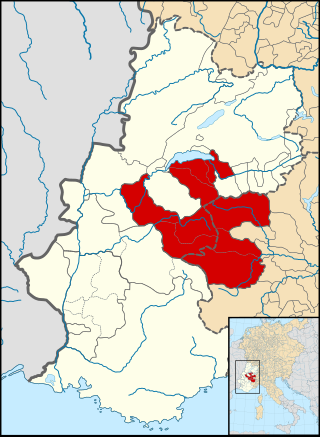
The County of Savoy was a State of the Holy Roman Empire which emerged, along with the free communes of Switzerland, from the collapse of the Burgundian Kingdom in the 11th century. It was the cradle of the future Savoyard state.
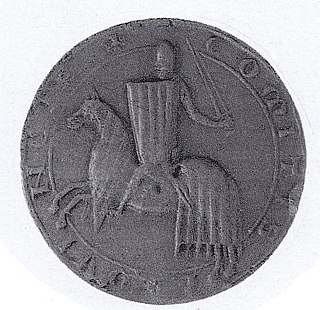
Ramon Berenguer IV was a member of the House of Barcelona who ruled as count of Provence and Forcalquier. He was the first count of Provence to live in the county in more than one hundred years. During the minority of a previous count, the regency was exercised by Ramon Berenguer IV de Barcelona, who is sometimes counted among the counts of Provence.

Manfred III was the third Marquess of Saluzzo, from 1215 to his death. He was the son of Boniface of Saluzzo and Maria di Torres of Sassari. Since his father died in 1212, he succeeded his grandfather Manfred II as marquess on the latter's death in 1215. His paternal grandmother Azalaïs or Adelasia of Montferrat was regent during his minority until 1218. During that period, his grandmother paid tribute to Count Thomas I of Savoy.

Manfred IV was the fifth marquess of Saluzzo from 1296, the son of Thomas I and Luisa of Ceva.
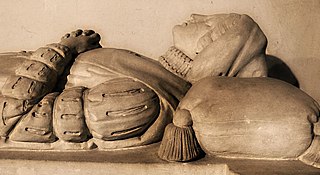
Beatrice of Savoy was Countess consort of Provence by her marriage to Ramon Berenguer IV, Count of Provence. She served as regent of her birth country Savoy during the absence of her brother in 1264.
Boniface II, called the Giant, was the eleventh Marquis of Montferrat from 1225 until his death. He became the titular King of Thessalonica in 1239.

William of Savoy was a bishop from the House of Savoy. He was a son of Thomas, Count of Savoy and Margaret of Geneva. He was elected bishop of Valence in 1224. He negotiated the weddings of queens, and was an advisor to Henry III of England. Between his religious roles and his family relations, his influence was noted from London to Rome.

Amadeus VIII, nicknamed the Peaceful, was Count of Savoy from 1391 to 1416 and Duke of Savoy from 1416 to 1440. He was the son of Amadeus VII, Count of Savoy and Bonne of Berry. He was a claimant to the papacy from 1439 to 1449 as Felix V in opposition to Popes Eugene IV and Nicholas V, and is considered the last historical antipope.

Amadeus III was the Count of Geneva from 1320 until his death. He ruled the Genevois, but not the city of Geneva proper, and it was during his time that the term "Genevois" came to be used as it is today. He was the eldest son and successor of William III and Agnes, daughter of Amadeus V of Savoy. He played a major rôle in the politics of the House of Savoy, serving consecutively as regent and president of the council, and also sitting on the feudal tribunal—one of three tribunals of the Audiences générales—of the Duchy of Aosta.

Cecile of Baux (1230–1275), was a Countess Consort of Savoy; married in 1244 to Amadeus IV, Count of Savoy. She was the daughter of Barral of Baux and his wife, Sibylle d'Anduze. She was the Regent of Savoy during the minority of her son, Boniface, Count of Savoy, from 1253 until 1259.

Marguerite of Burgundy, was Countess of Savoy from 1233 until her death by marriage to Amadeus IV, Count of Savoy. She was the youngest daughter of Hugh III, Duke of Burgundy, and his second wife, Béatrice of Albon.

Beatrice of Savoy was a daughter of Amadeus IV, Count of Savoy and his first wife Marguerite of Burgundy. She was a member of the House of Savoy by birth and by her first marriage she was Marchioness consort of Saluzzo.
References
- ↑ Cox 1974, pp. 8, 226.
- ↑ Cox 1974, pp. 41–43.
- ↑ Cox 1974, pp. 51–52.
- ↑ Cox 1974, p. 105.
- ↑ Cox 1974, p. 224.
- ↑ Mugnier 1890, pp. 17–18.
- ↑ Cox 1974, pp. 65–67.
- ↑ Cognasso 1940, p. 256vol.II
- ↑ Cox 1974, pp. 128–153.
- ↑ Cox 1974, pp. 179–184.
- ↑ Cox 1974, p. 462.
- ↑ Chaubet 1984, p. 125.
- ↑ Gee 2002, p. 177.
- ↑ Cox 1974, p. 126.
Sources
- Chaubet, Daniel (1984). "Une enquête historique en Savoie au XVe siècle". Journal des savants (in French). 1: 93-125. doi:10.3406/jds.1984.1477.
- Cognasso, Francesco (1940). Tommaso I ed Amedeo IV (in Italian). Turin.
- Cox, Eugene L. (1974). The Eagles of Savoy. Princeton: Princeton University Press. ISBN 0691052166.
- Gee, Loveday Lewes (2002). Women, Art, and Patronage from Henry III to Edward III, 1216-1377. The Boydell Press.
- Mugnier, F. (1890). Les Savoyards en Angleterre au XIII siècle. Chambéry.